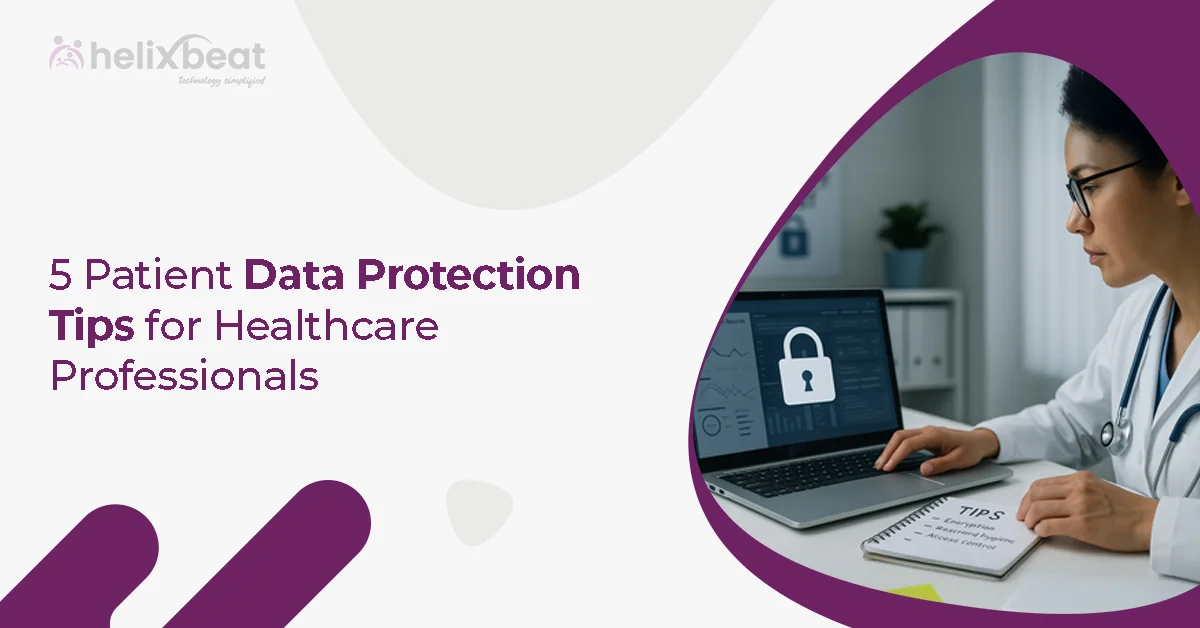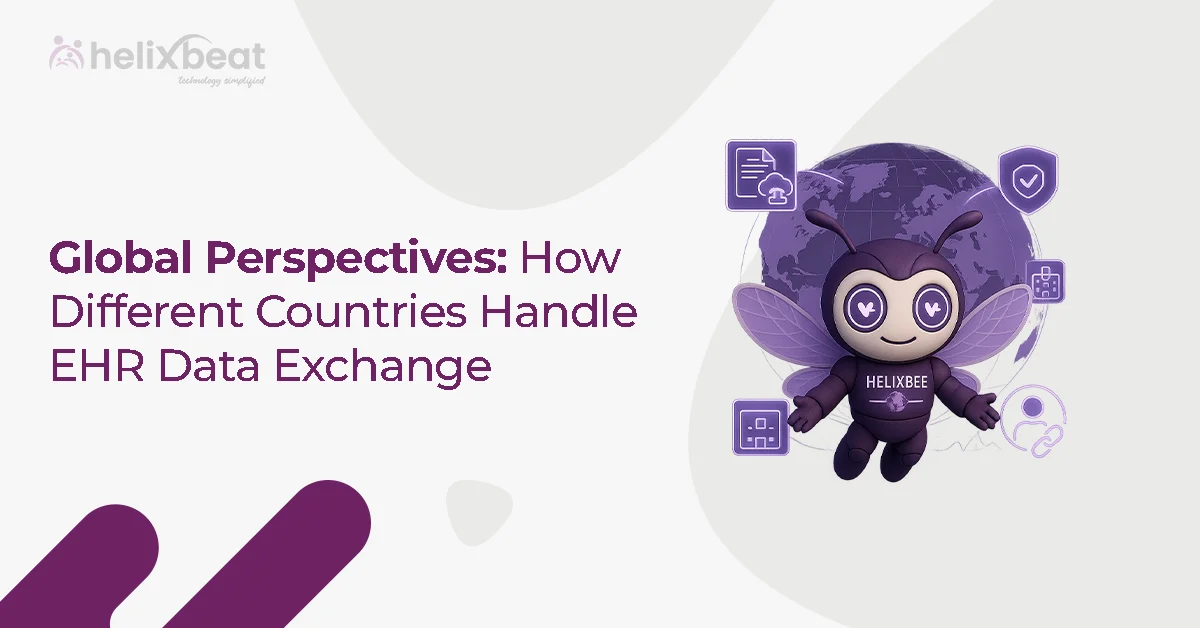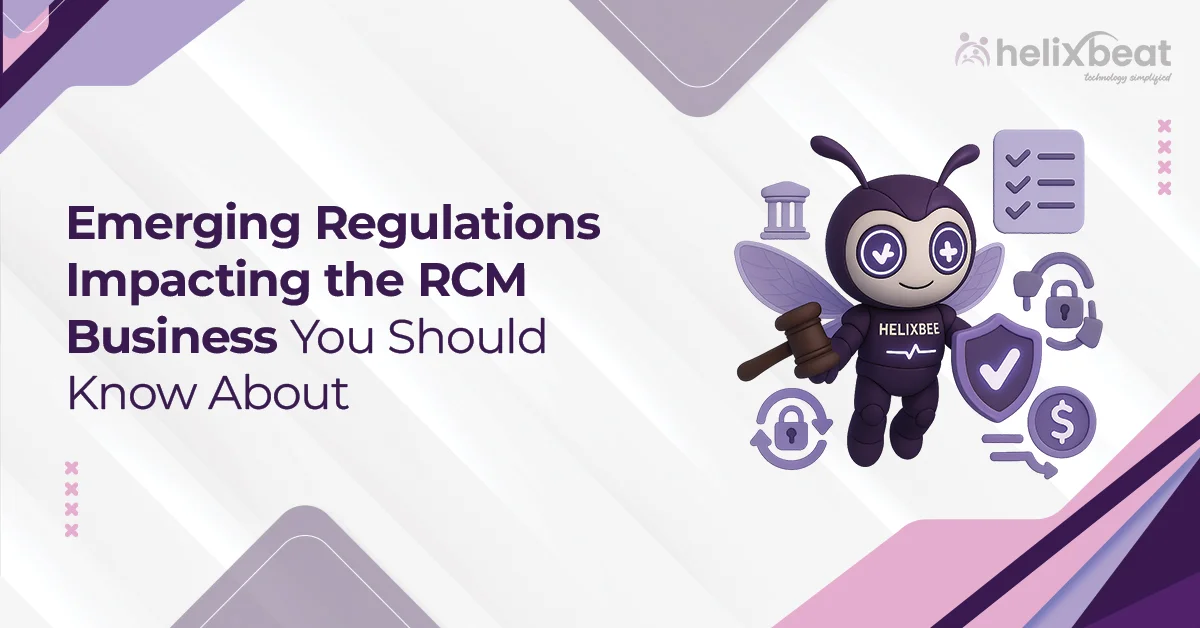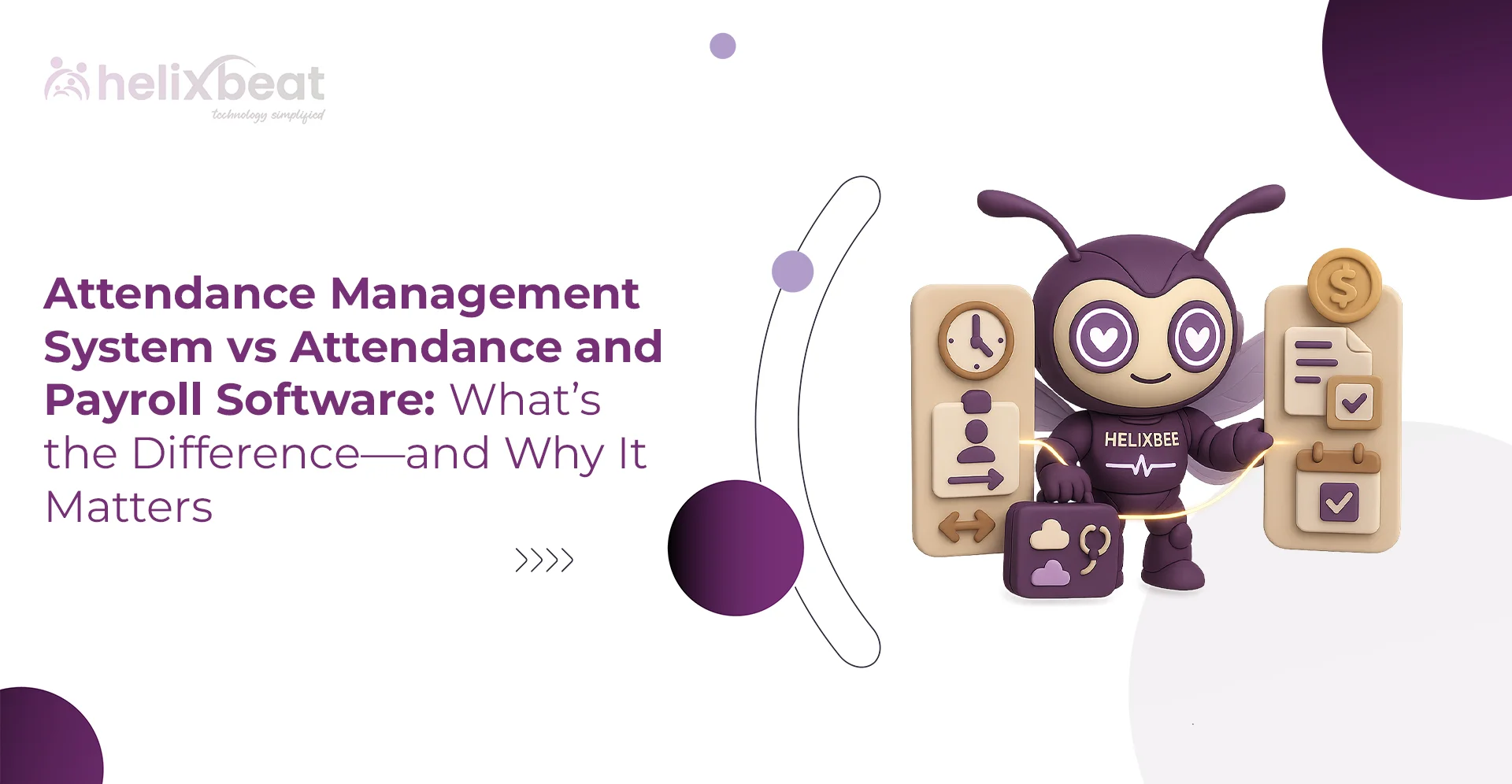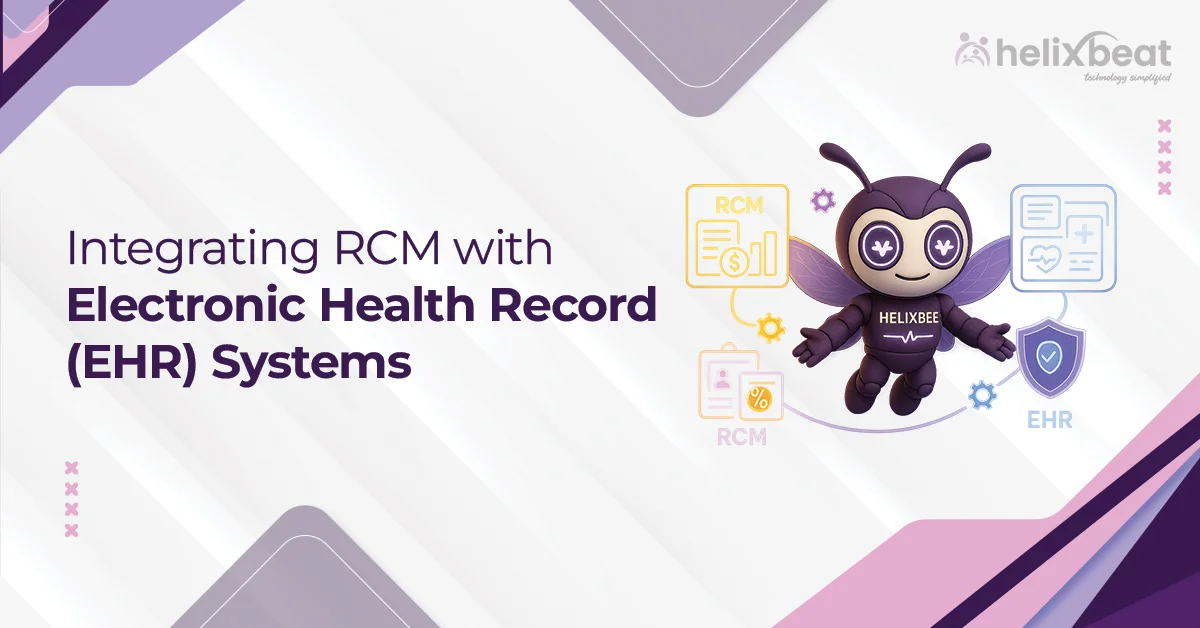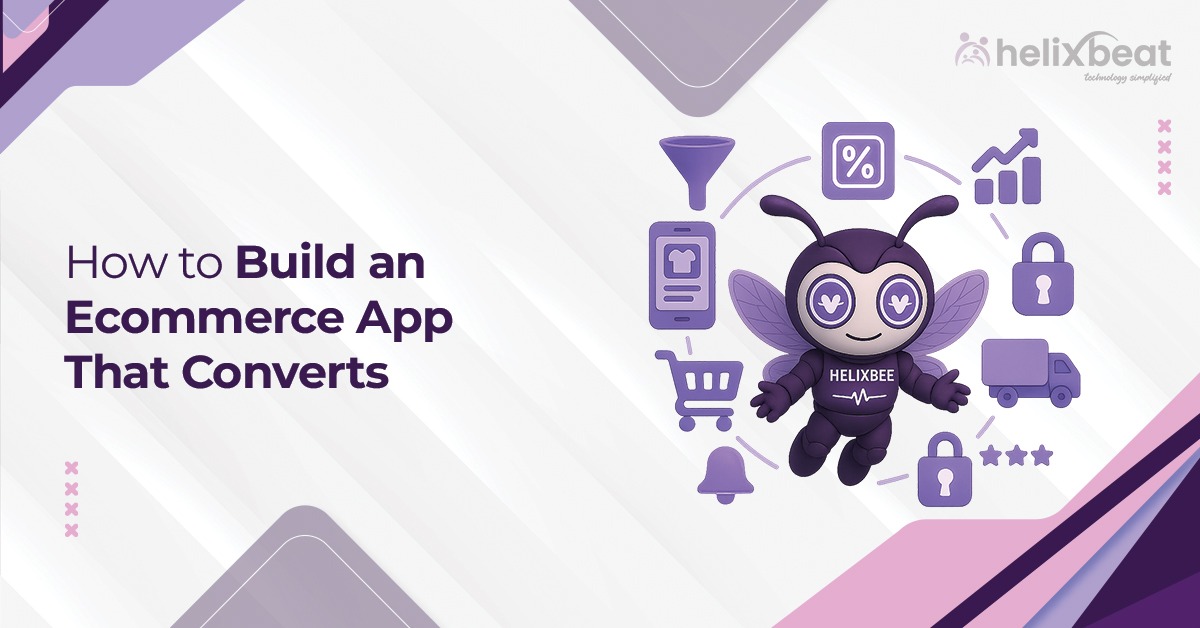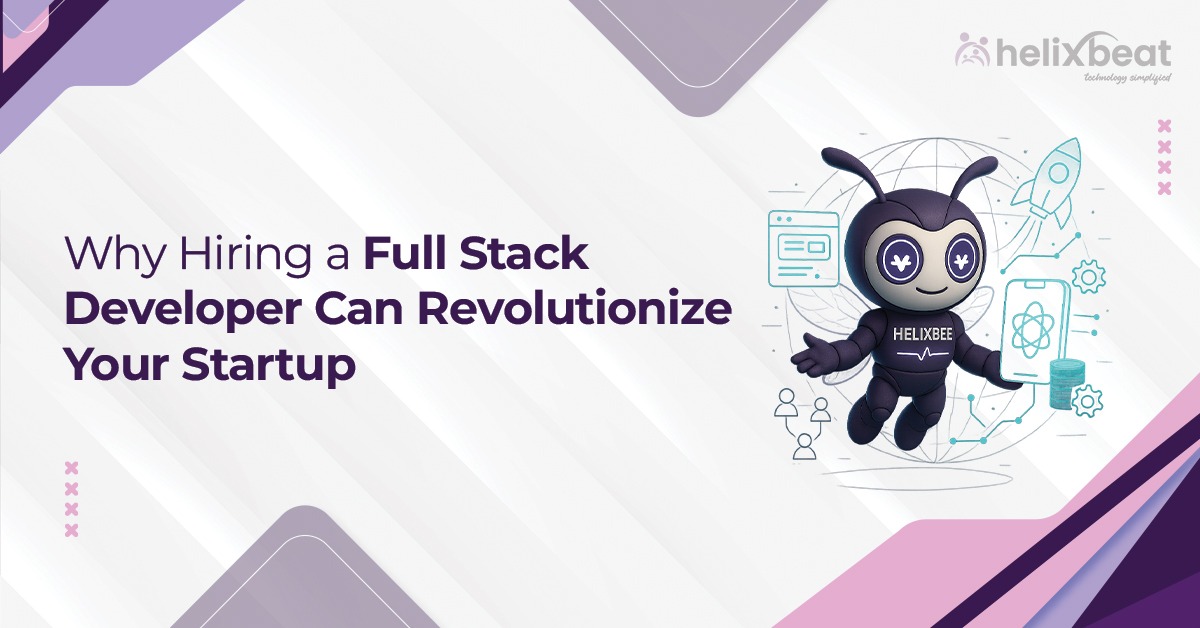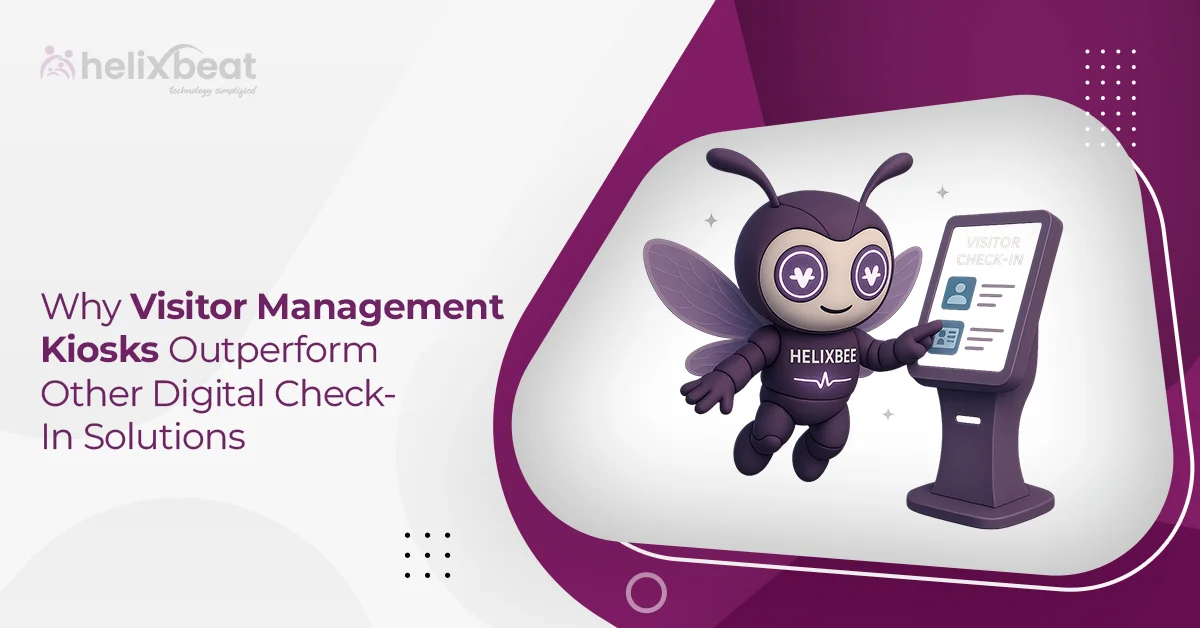Ever wondered what would happen if your patient’s personal information got into the wrong hands? In healthcare, patient data is not just another file on a server it’s a treasure trove of sensitive, private information that must be protected at all costs.
As more healthcare data is digitized, the risk of cybercriminals targeting your practice grows every day. Imagine this: one data breach could lead to a financial mess, legal headaches, and a loss of your patients’ trust. Not to mention the potential fines if you’re not compliant with laws like HIPAA.
But don’t worry! In this blog, we’ll share five practical tips that every healthcare professional can use to keep patient data safe.
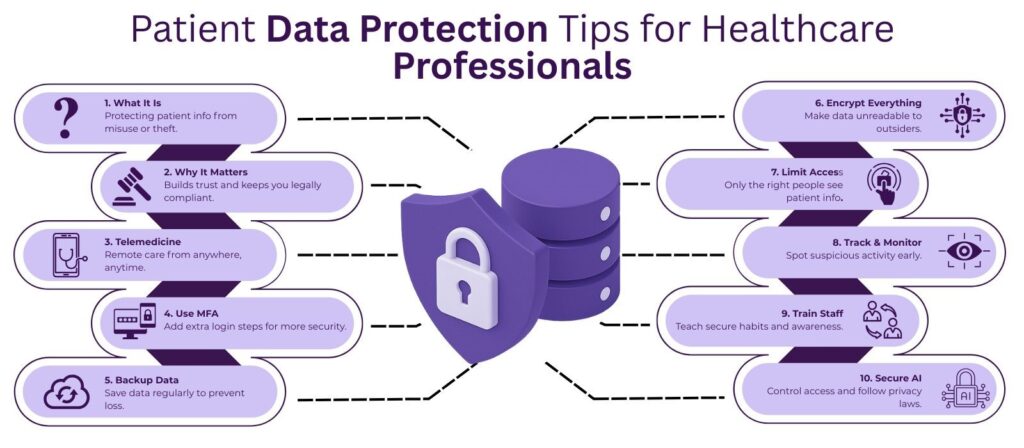
Table of Contents
What is Patient Data Protection?
Patient Data Protection means taking steps to keep sensitive personal and medical information safe from unauthorized access, theft, loss, or misuse. This is important to keep patient information private, build trust in healthcare providers, and follow legal rules like HIPAA (Health Insurance Portability and Accountability Act).
Why is Protecting Patient Data Important in Healthcare?
Protecting patient data is a fundamental responsibility of healthcare providers. With the increasing amount of sensitive information being shared electronically, ensuring its security is crucial to maintaining patient trust and complying with legal standards.
Trust and Confidentiality
- Patient trust is essential for a successful healthcare relationship.
- Protecting patient data fosters confidentiality and ensures patients feel comfortable sharing sensitive information.
- PULSE by Helixbeat helps safeguard patient data with secure storage, encryption, and real-time access controls, promoting trust between patients and healthcare providers.
Legal Compliance
- Healthcare providers must comply with legal standards like HIPAA (Health Insurance Portability and Accountability Act) and the 21st Century Cures Act.
- Failure to comply can lead to severe penalties, including:
- HIPAA fines range from $100 to $50,000 per violation, with a maximum penalty of $1.5 million.
- Try PULSE by Helixbeat to ensure compliance by incorporating industry-standard data protection features and help healthcare organizations avoid legal consequences.
Preventing Identity Theft
- Identity theft in healthcare is a growing risk, with stolen medical records being used for fraud and financial crimes.
- Patient data often includes personal identification information (PII), making it a prime target for cybercriminals.
Learn how PULSE by Helixbeat offers encryption, secure authentication, and continuous monitoring.
Impact on Patient Care
- Secure data is vital for providing high-quality care.
- Healthcare professionals rely on accurate, up-to-date information to make informed decisions, leading to better diagnosis and treatment.
Reputation
- A healthcare provider’s reputation is crucial for maintaining patient trust and attracting new patients.
- Data breaches or security lapses can damage the institution’s credibility, leading to patient loss and public mistrust.
5 Patient Data Protection Tips for Healthcare Professionals
By following these 5 Patient Data Protection Tips, healthcare professionals can enhance security and ensure the confidentiality, integrity, and availability of patient data.
Tip 1: Use Strong Passwords
- Encourage the use of complex passwords that are difficult to guess, combining letters, numbers, and special characters.
- Periodic password updates should be mandatory to prevent unauthorized access.
Tip 2: Implement Multi-Factor Authentication (MFA)
- Multi-Factor Authentication (MFA) adds an additional layer of security, requiring users to provide two or more verification factors before accessing patient data.
- MFA typically involves something the user knows (password), something they have (smartphone or token), or something they are (fingerprint or facial recognition).
Tip 3: Regular Data Backups
- Regular data backups ensure patient data is not lost due to cyberattacks, system failures, or human error.
- Backup solutions should be automated and performed frequently to minimize the risk of data loss.
Tip 4: Encrypt Patient Data
- Data encryption is crucial to protecting patient information during both storage and transmission.
- Encrypted data becomes unreadable to unauthorized users, protecting it from cybercriminals.
- Encryption should be applied to all forms of sensitive data, including emails, patient records, and databases.
Tip 5: Limit Access to Sensitive Data
- Role-based access control (RBAC) ensures that only authorized individuals can view or modify patient information.
- This minimizes the risk of internal threats or accidental data exposure.
- Access levels should be determined based on the user’s role and responsibilities, ensuring that sensitive data is only accessible to those who need it.
Best Practices for Ongoing Monitoring of Patient Data
- Regular Audits
- Track who accesses patient data and when.
- Identify any unauthorized or unusual activity.
- Maintain audit trails to ensure accountability.
- Help ensure compliance with HIPAA and other data protection regulations.
- Regularly review audit logs to detect potential risks or breaches early.
- Real-Time Threat Detection
- Implement automated systems that alert administrators to suspicious activity.
- Use machine learning to detect anomalies in data access patterns.
- Monitor for signs of cyberattacks, such as ransomware or phishing attempts.
- Ensure immediate response to alerts to minimize damage.
- Regularly test detection systems to ensure they are practical and up to date.
- Employee Training
- Provide ongoing training on current data protection policies.
- Teach staff to identify phishing attempts and other social engineering attacks.
- Encourage the use of secure passwords and proper login procedures.
- Promote secure file sharing and email practices.
- Security Patches and Updates
- Regularly check for software updates and security patches.
- Install patches as soon as they are released to address vulnerabilities.
- Test updates to ensure they don’t disrupt system performance or introduce new issues.
- Use automated patch management tools to streamline the process.
- Risk Assessment
- Perform regular risk assessments to evaluate the effectiveness of current security measures.
- Identify new risks as technologies, threats, and regulations evolve.
- Prioritize high-risk areas for immediate attention.
- Evaluate the impact of potential breaches and prepare mitigation strategies.
- Update data protection policies based on assessment findings.
How to Ensure Data Privacy and Security in Healthcare AI Systems?
Implementing the right strategies ensures that sensitive patient information is protected from unauthorized access, breaches, and other potential risks.
| Best Practice | Description |
| Data Encryption | Encrypt patient data at rest and in transit to prevent unauthorized access and protect information during transfer. |
| Secure Data Storage | Use encrypted cloud or on-premise storage with access controls and regular backups to ensure data security and availability. |
| Model Transparency | Ensure explainable AI by making data usage and decision-making clear, in compliance with HIPAA and GDPR. |
| Access Control | Apply role-based access and auditing to limit access to patient data to authorized users only. |
| Compliance with Legal Standards | Ensure AI systems comply with HIPAA, GDPR, and other privacy regulations to safeguard patient data and avoid legal issues. |
Wrapping Up
Protecting patient data is not just a legal obligation but a critical aspect of providing high-quality healthcare. With growing cyber threats, data violations, and regulatory pressures, healthcare experts face significant challenges securing sensitive patient information. By executing the best practices outlined, such as data encryption, real-time threat detection, and role-based access control, healthcare providers can proactively address these issues and safeguard patient data effectively.
However, achieving robust data protection requires the right tools. Helixbeat PULSE offers a combined, AI-powered solution that simplifies patient data security through real-time monitoring, automated compliance checks, and secure data encryption. Using PULSE, health care organizations can seamlessly manage data protection, reduce risks, and ensure compliance. Ultimately, this leads to improved patient trust, enhanced care quality, and better health outcomes, proving that adequate data protection is about compliance and providing the best possible care.
Explore how Helixbeat PULSE can elevate your data security today!
FAQs
1- What are 5 ways to secure data?
Use strong passwords, enable multi-factor authentication, perform regular data backups, encrypt sensitive data, and limit access to authorized personnel only.
2- What is personal data in medicine?
Personal data in medicine includes any information that can identify a patient, such as their name, contact details, medical history, and test results.
3- What can you do to protect patient information?
Implement data encryption, use secure storage solutions, train staff on privacy policies, conduct regular audits, and limit access to sensitive data.
4- How to maintain patient data?
Keep data accurate and up to date, store it securely, apply encryption, and ensure regular backups to prevent loss.
5- What is the importance of protecting patient data?
Protecting patient data ensures privacy, prevents identity theft, complies with regulations, builds trust with patients, and improves care quality.
6- 5 patient data protection tips for healthcare professionals (2021)
Use strong passwords, implement multi-factor authentication, encrypt data, conduct regular audits, and limit data access based on roles.
7- How to protect patient health information in the workplace?
Implement secure access controls, ensure staff are trained on data protection, use encryption, and regularly review security protocols.
8- Identify best practices for ongoing monitoring of health IT systems and networks?
Conduct regular audits, use real-time threat detection, apply security patches, provide employee training, and perform periodic risk assessments.
What is one way to ensure data privacy and security in healthcare AI systems?Encrypt patient data both at rest and in transit to ensure its security in AI systems.
9- Data security in healthcare?
Data security in healthcare involves protecting sensitive patient data from unauthorized access, breaches, and misuse through encryption, access control, and monitoring systems.
10- How to protect patient privacy and confidentiality?
Use secure communication channels, limit access to patient data, educate staff on confidentiality policies, and follow legal and regulatory standards like HIPAA.
11- What is a key component of the HIPAA privacy rule?
A key component is the protection of patient confidentiality by limiting who can access and share personal health information (PHI).



